Embark on a journey to explore the magnificent Gia Long Tomb, a historical gem located in the ancient city of Hue, Vietnam. Discover the architectural wonders and learn about the life of Emperor Gia Long, the founder of the Nguyen Dynasty.
List of Contents
1. Overview of Gia Long Tomb
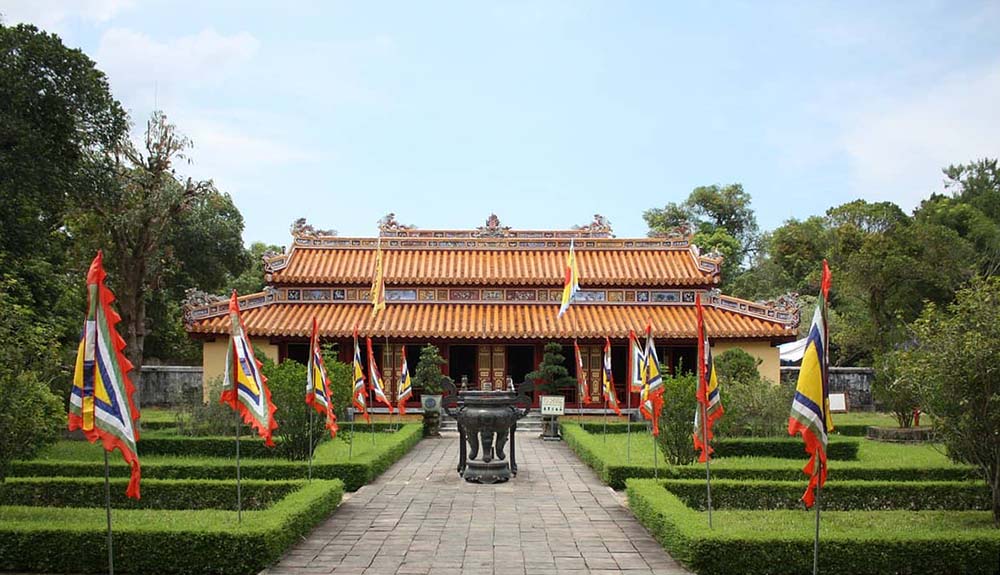
The Gia Long Tomb, the imperial resting place of Emperor Gia Long, stands as a historical landmark in Vietnam. It symbolizes the country's unification and the start of the Nguyen Dynasty, the last feudal reign.
Situated 16 kilometers from Hue City's center, atop Thien Tho Mountain on the Perfume River's west bank, the mausoleum is a testament to the emperor's legacy. The complex includes the graves of Gia Long, his family, and other royal figures.
Gia Long's final resting place is a UNESCO World Heritage site, highlighting its cultural and historical significance.
2. Historical of Gia Long Tomb
Emperor Gia Long's tomb bears the name of the Nguyen Dynasty's first ruler. Born Nguyen Phuc Anh in 1762, he led a tumultuous life of battles and alliances.
His 1802-1819 reign unified Vietnam, bringing fragmented regions under one rule. His efforts founded the Nguyen Dynasty, which ruled for over a century.
The tomb's construction began in 1814 for Thua Thien Empress, Gia Long's first wife, and was completed in 1820. It later became the burial ground for the emperor and several royal family members.
Despite war damage, renovations have restored its historical and architectural integrity. Preservation efforts ensure Gia Long's mausoleum remains a symbol of Vietnam's rich heritage.
3. Location and Access
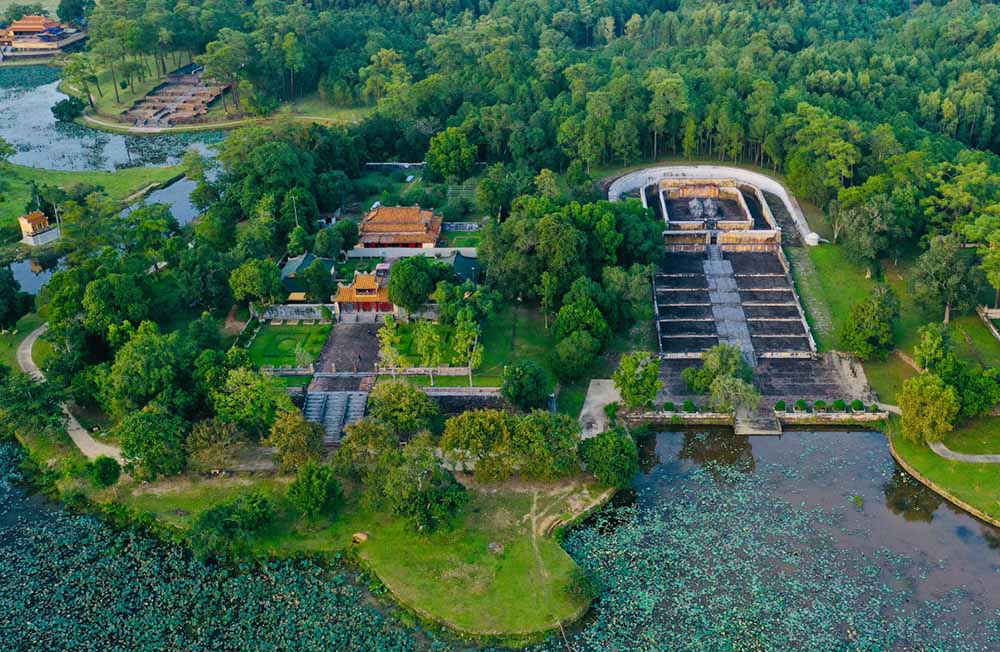
Emperor Gia Long's final resting place sits strategically on Thien Tho Mountain, offering a serene and majestic setting.
Located on the Perfume River‘s west bank, the tomb is about 20 kilometers from Hue City. This location provides a picturesque landscape and signifies the Nguyen Dynasty's historical and cultural essence.
Reaching the Gia Long Tomb is an adventure with multiple transportation options. A unique way is a two-hour dragon boat ride along the Perfume River, offering captivating views. Visitors can also bike, motorcycle, hire a car, use Grab bikes, or take taxis.
For those unfamiliar with the route, hiring a local driver or joining organized tours is advisable. Tours often include private car transfers, knowledgeable guides, and a well-planned itinerary for a smooth and informative visit to the imperial tomb.
4. Structure and Layout

The Gia Long Tomb is a harmonious blend of natural beauty and architectural elegance, reflecting the emperor's vision and legacy. The mausoleum is divided into three main sections, each with unique features and significance.
4.1. Central Area
The central area houses the burial site of Emperor Gia Long and Empress Thua Thien. The double graves symbolize their loyalty and happiness. A courtyard with stone sculptures of horses, elephants, and servants surrounds the site.
Visitors pass through this courtyard to reach the burial site, protected by the Buu Thanh wall system. This area profoundly represents the emperor's life and devotion to his empress.
4.2. Left Section
The Minh Thanh Shrine, dedicated to worshiping Emperor Gia Long and Empress Thua Thien, lies to the left.
The shrine's simple yet dignified construction houses significant memorabilia from the emperor's life, such as belts, hats, and saddles. The tranquil environment, surrounded by green trees and open air, provides a peaceful space for reflection and reverence.
4.3. Right Section
The Bi Dinh Pavilion, containing Emperor Gia Long's merit records, marks the tomb's right section.
A large stele, inscribed with intricate carvings by Emperor Minh Mang praising his father's accomplishments, stands in the pavilion. The serene setting, amidst mature pine trees, adds to the overall sense of peace and respect.
5. Additional Burial Sites

Gia Long's mausoleum is a comprehensive complex, including burial sites of several family members.
The Thoai Thanh Tomb and the Hoang Co Tomb are among the significant tombs within this complex. These additional burial sites are scattered throughout the Gia Long Tomb, extending its perimeter to roughly 11,234 meters.
This extensive layout honors the emperor's legacy and pays homage to his close family members, reflecting the deep familial bonds within the Nguyen Dynasty.
6. Visitor Information
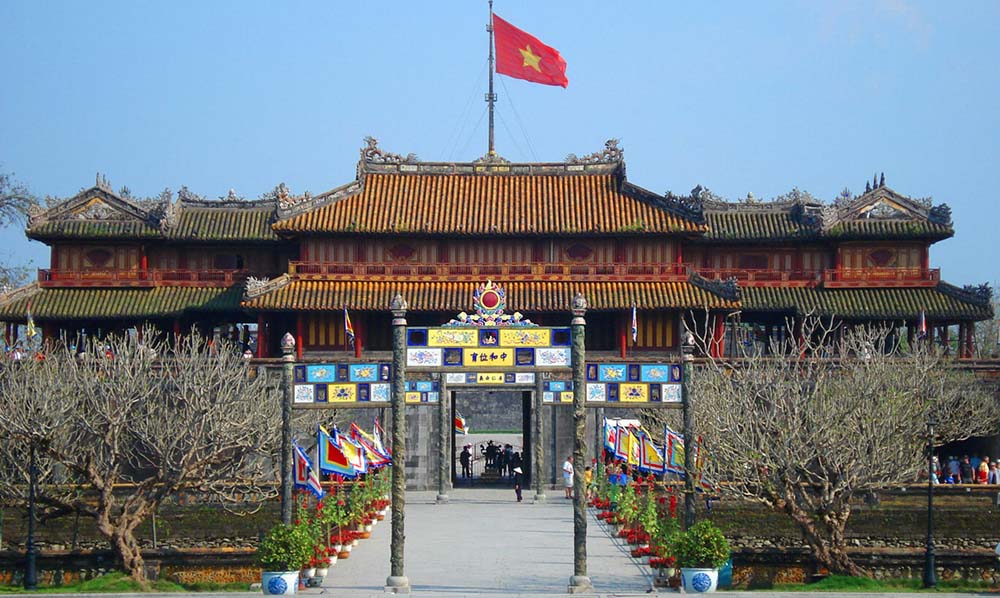
6.1. Opening Hours and Entrance Fees
Gia Long's mausoleum is open daily from 7:30 AM to 5 PM. The entrance fee is 150,000 VND per person, while children under 12 enter free.
These hours and fees ensure accessibility for a wide range of visitors to explore the tomb's historical and cultural significance.
6.2. Best Time To Visit Gia Long Tomb
The best time to visit Gia Long's tomb is from March to April, when Hue's weather is most pleasant. The peak tourism season from November to April is also an excellent period, offering ideal conditions for sightseeing and exploration.
6.3. Travel Tips
When visiting Gia Long's resting place or any religious and historical sites in Vietnam, adhere to a respectful dress code. Wear polite, less revealing clothing to show respect for the site and local customs.
Given the amount of walking involved, wear light, comfortable clothing like T-shirts, over-knee pants, and sneakers. For sun protection and convenience, apply sunscreen and consider wearing hats, sunglasses, and long-sleeved jackets.
To make the most of the visit, purchase combo tickets or join guided tours. Combo tickets offer cost savings by bundling multiple attractions, while guided tours provide valuable insights and convenient transportation.
7. Unique Features and Significance
7.1. Natural Surroundings
One of the most striking aspects of the Gia Long Tomb is its stunning natural surroundings.
Nestled among endless mountain ranges and pine forests, the mausoleum offers a serene and tranquil environment that is both picturesque and peaceful. The scenic beauty of the area provides a perfect backdrop, making it a place of reflection and tranquility.
7.2. Architectural Simplicity
Unlike other royal tombs with grandiose structures, Emperor Gia Long's tomb is characterized by its architectural simplicity.
The complex lacks extravagant buildings, opting for a modest and harmonious design that integrates with the natural landscape. This simplicity reflects the emperor's appreciation for nature and enhances the overall serenity and solemnity of the burial site.
7.3. Historical Value
Gia Long's final resting place holds immense historical value, serving as a testament to the emperor's life and the Nguyen Dynasty's legacy. Despite war damage, the tomb has been the focus of extensive preservation and restoration efforts.
These initiatives have maintained the mausoleum's historical integrity, ensuring future generations can appreciate its significance. The impact of war on the tomb and the subsequent restoration work highlight the resilience and enduring importance of this historical landmark.
8. Nearby Gia Long Tomb Attractions
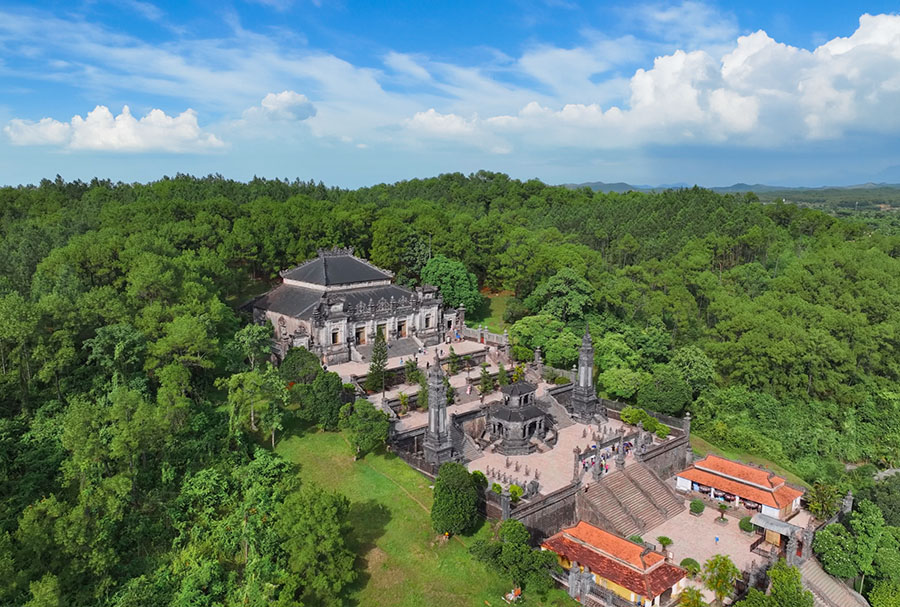
In addition to the Gia Long Tomb, there are several other impressive imperial tombs near the city of Hue that are well worth visiting. These tombs, built for the emperors of the Nguyen Dynasty, are not only the final resting places of the rulers but also remarkable architectural and artistic achievements.
Here are some of the most notable tombs:
- Tu Duc Tomb: Known for its poetic and picturesque landscape, this tomb features a large lake, pavilions, and a palace complex where the emperor once retreated for relaxation.
- Minh Mang Tomb: Situated in a tranquil setting surrounded by forests and lakes, this tomb is renowned for its harmonious blend of architecture and nature, reflecting the emperor's Confucian beliefs.
- Khai Dinh Tomb: Unlike other tombs, Khai Dinh's mausoleum incorporates European elements in its design, resulting in a unique fusion of Vietnamese and Western architectural styles.
- Thieu Tri Tomb: Although smaller in scale compared to other tombs, Thieu Tri's final resting place is notable for its serene atmosphere and well-preserved architecture.
These imperial tombs offer visitors a glimpse into the rich history, culture, and architectural heritage of Vietnam's former rulers, making them must-see attractions for anyone exploring the Hue region.
9. Conclusion
Gia Long Tomb is more than just a burial site; it is a symbol of Vietnam's rich history and cultural heritage. Its unique combination of natural beauty, architectural simplicity, and historical significance makes it a must-visit destination for those interested in the legacy of the Nguyen Dynasty.
When visiting Gia Long Tomb, you're already immersed in the rich history of Hue. To fully experience this city, don't miss our comprehensive Hue Travel Guide. It covers everything you need to know, from the best times to visit to must-see landmarks.
Additionally, check out our list of Things to do in Hue to explore more attractions, local cuisine, and cultural experiences. These guides will ensure you make the most of your trip to this beautiful and historic city.

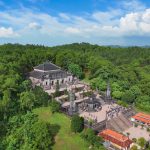





obviously like your web site but you need to take a look at the spelling on quite a few of your posts. Several of them are rife with spelling problems and I to find it very bothersome to inform the reality on the other hand I?¦ll surely come again again.